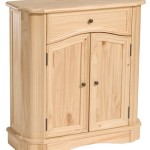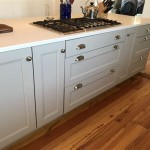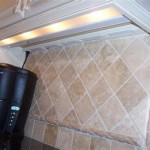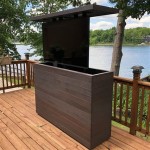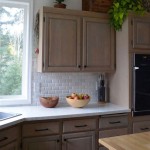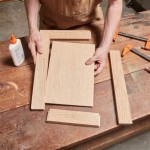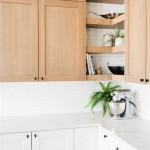How To Clean Your Kitchen Cabinets and Properly Painted White Walls
Maintaining a pristine kitchen involves more than just clean countertops and sparkling appliances. Cabinets and walls, especially those painted white, require regular attention to retain their fresh appearance. This guide provides comprehensive instructions on how to effectively clean both kitchen cabinets and white painted walls, preserving their beauty and extending their lifespan.
Cleaning Kitchen Cabinets
Kitchen cabinets accumulate grease, grime, and food splatters, necessitating regular cleaning. The appropriate cleaning method depends on the cabinet material and finish. Here's a general approach suitable for most cabinet types:
1. Gather Supplies: Assemble necessary cleaning supplies before beginning. These typically include a soft microfiber cloth, a cleaning solution (mild dish soap and warm water or a specialized cabinet cleaner), a bucket of clean water, and a dry cloth or paper towels.
2. Prepare the Area: Remove any items from the countertop and clear the area around the cabinets. This allows for unobstructed access and prevents accidental spills or damage to belongings.
3. Test the Solution: Before applying the cleaning solution to the entire cabinet surface, test it on a small, inconspicuous area. This helps ensure the solution does not damage or discolor the finish.
4. Apply the Solution: Dampen the microfiber cloth with the cleaning solution, ensuring it's not dripping wet. Gently wipe down the cabinet surfaces, working in small sections. Pay particular attention to areas prone to grease buildup, such as near the stovetop and handles.
5. Rinse and Dry: After cleaning, rinse the cabinets thoroughly with clean water using a separate damp cloth. Immediately dry the surfaces with a dry cloth or paper towels to prevent water spots or streaks.
6. Address Stubborn Stains: For tougher stains or sticky residues, create a paste of baking soda and water. Gently apply the paste to the affected area and let it sit for a few minutes before wiping away with a damp cloth. Avoid abrasive cleaners or scrubbing pads, as they can scratch the cabinet surface.
7. Clean Hardware Separately: Remove cabinet hardware, such as knobs and pulls, and clean them separately with a suitable cleaner. Soak them in warm soapy water or use a specialized metal cleaner if necessary. Dry thoroughly before reattaching.
8. Regular Maintenance: Regularly wiping down cabinets with a damp cloth can prevent the buildup of grease and grime, simplifying future cleaning efforts.
9. Consider Cabinet Material: Certain cabinet materials, such as unfinished wood or painted surfaces, may require specific cleaning products or techniques. Consult the manufacturer's guidelines for optimal care instructions.
Cleaning Properly Painted White Walls
White walls, while visually appealing, can easily show dirt, scuffs, and fingerprints. Proper cleaning techniques are essential to maintain their brightness.
1. Prepare the Area: Protect the floor and any nearby furniture by covering them with drop cloths or old sheets. This prevents accidental spills or drips from damaging surfaces.
2. Dust the Walls: Begin by dusting the walls with a soft duster or a vacuum cleaner with a brush attachment. This removes loose dust and debris before washing.
3. Choose a Cleaning Solution: A mild solution of warm water and dish soap is usually sufficient for cleaning painted walls. Alternatively, a specialized wall cleaner can be utilized.
4. Test the Solution: As with cabinets, test the cleaning solution on an inconspicuous area of the wall to ensure compatibility with the paint.
5. Wash the Walls: Dip a soft sponge or microfiber cloth into the cleaning solution, wringing out excess water to avoid dripping. Wash the walls in small sections, working from top to bottom to prevent streaks.
6. Rinse and Dry: After washing, rinse the walls with clean water using a separate damp cloth. This removes any remaining soap residue. Dry the walls immediately with a clean, dry cloth to prevent water spots.
7. Address Stubborn Marks: For stubborn scuffs or marks, create a paste of baking soda and water. Apply the paste gently to the affected area and let it sit for a few minutes before wiping away with a damp cloth. Avoid harsh abrasive cleaners or scrubbing, which can damage the paint.
8. Spot Cleaning: For small spots or fingerprints, a damp microfiber cloth is often sufficient for quick cleaning.
9. Prevent Future Marks: Encourage family members to avoid touching the walls unnecessarily. Promptly address spills or splatters to prevent staining.
By following these cleaning guidelines, homeowners can maintain the pristine appearance of their kitchen cabinets and white painted walls, ensuring a fresh and inviting kitchen environment.

3 Super Easy Ways To Clean White Kitchen Cabinets And Avoid

How To Clean Prep Wood Kitchen Cabinets Before Painting Do Dodson Designs

How To Paint Oak Cabinets And Hide The Grain Tutorial

How To Repaint Painted Cabinets

Painting Kitchen Cabinets With A Sprayer Lemon Thistle

How To Clean White Kitchen Cabinets Cabinetselect Com

How To Prep And Paint Kitchen Cabinets Lowe S

Painting Cabinets The Right Way Lemon And Bloom

How To Paint Kitchen Cabinets Without Sanding Or Priming

Best Kitchen Cabinet Paint Finish For Professional Results Pennies A Fortune
Related Posts

